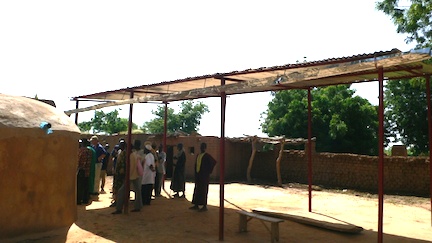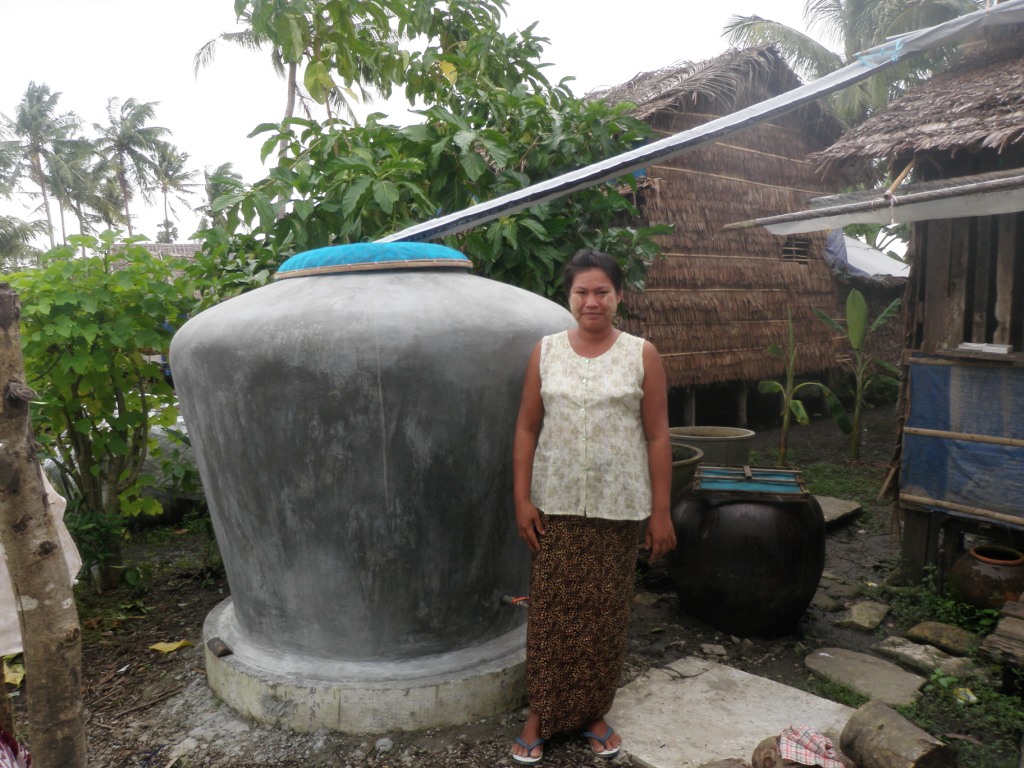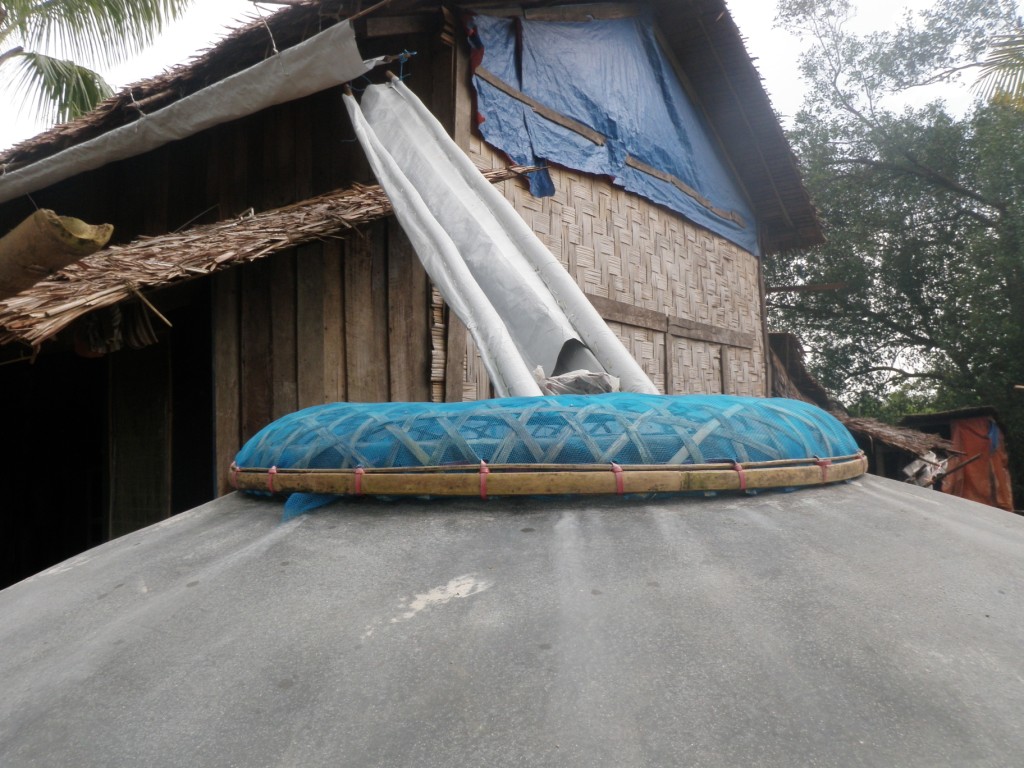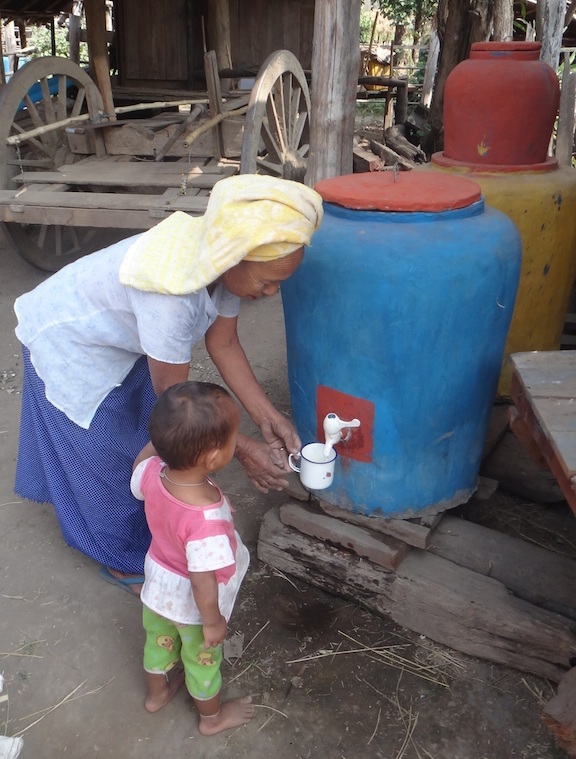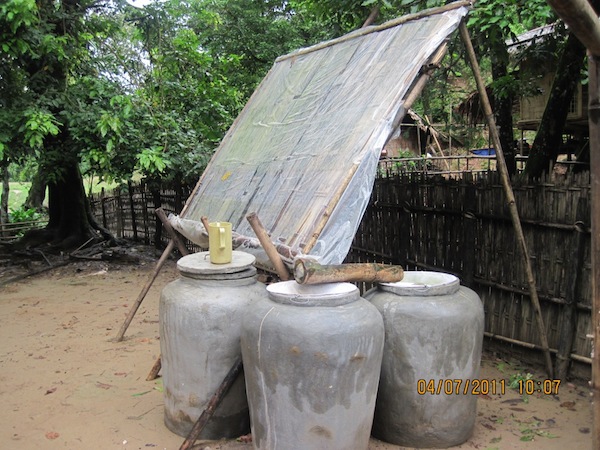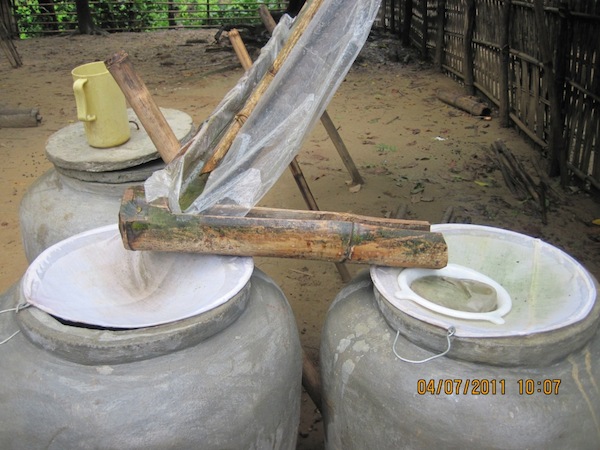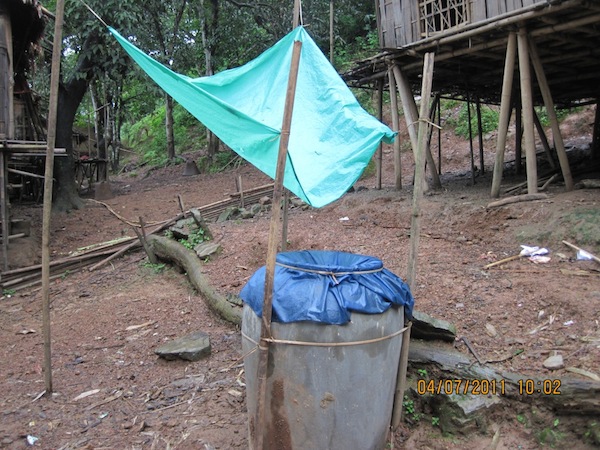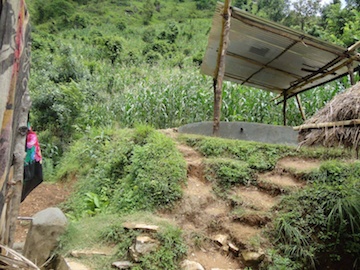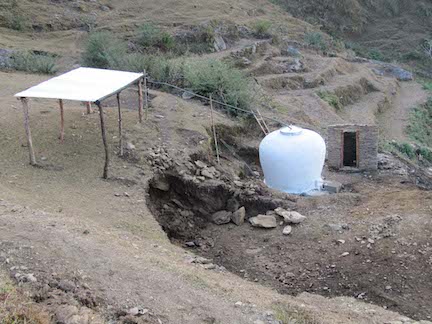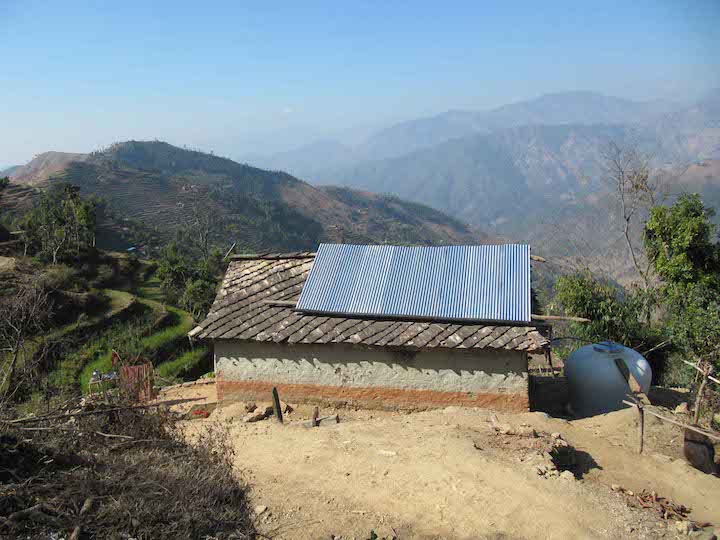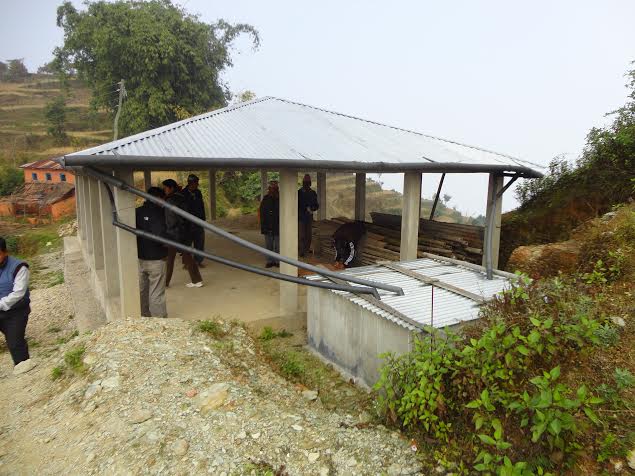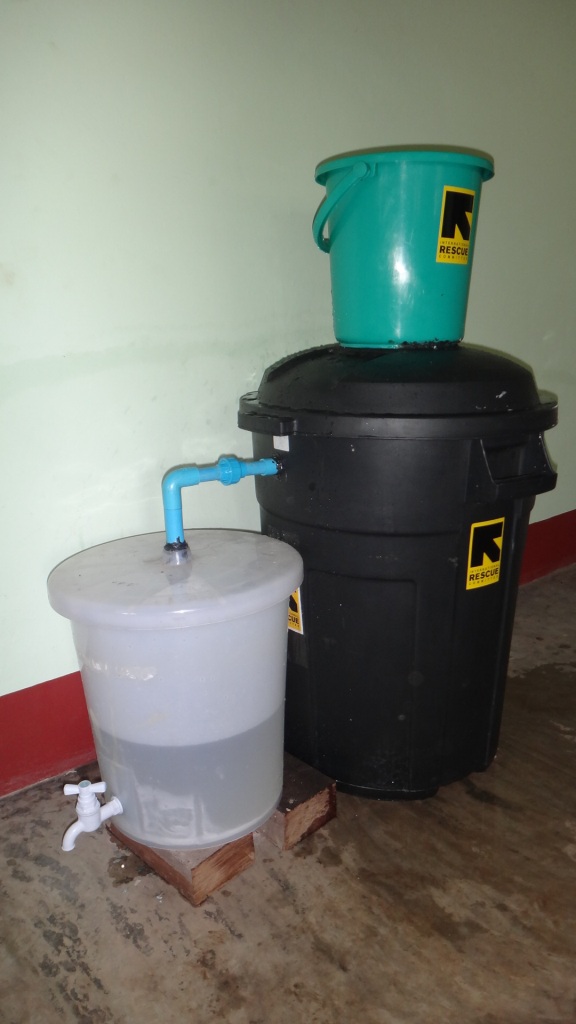Sample User Agreements for shared Rainwater harvesting tanks
| Topic | Conversation | Images / Documents |
|---|---|---|
| Sample User Agreements for shared Rainwater harvesting tanks |
Dear Rainwater Group, Some of you might recall that last year I made a query about collecting rainwater from thatched roofs for people living in the outer islands of Kiribati. In the end, despite some interesting suggestions and examples of such systems from other areas, we opted for a constructing a hangar or roof structure (inspired by this photo that R provided us) under which plastic tanks will be placed, one for each of 4-6 households. Now we would like to begin to craft a model water user agreement that the households will use amongst themselves to specify their roles, responsibilities and rights with respect to the maintenance and use of the catchment structure and the tanks. I would be really grateful if anyone has possible examples of agreements that might help us to get started on the drafting of a basic model for an agreement (to be finalised by users, naturally). Other advice or pointers to good resources on this would also be very welcome. Thanks very much, - C |
|
|
Dear C, I can't help you with your rainwater-sharing management, except to encourage you in what is a really difficult task. Even within a single household, the management of limited stored water often goes awry. Wives resent their husbands bringing home water-consuming friends, children leave taps running, teenagers take long showers. Multi-family water rationing would not work in many societies, but perhaps Kiribati has suitable communal traditions. I see that you are going for above-ground tanks, though cement-domed, underground tanks cut into coral, with simple handpumps, were pioneered in the Pacific about 30 years ago and would almost certainly be cheaper. (There are pros and cons.) Your Equatorial climate is very suitable for RWH, especially in Northern Kiribati with its higher rainfall. There are no really dry months. However for a cluster of 6 households each of say 5 people consuming 20 lcd (therefore in total 220 cubic meters a year) and an annual rainfall of 1400mm you'll need a collection area of about 200 sq m per cluster. Do you have that much? Can you accept a lower daily demand - as WHO's 20 lcd is quite generous? Your question did not only relate to managing the sharing of water. No doubt you are also concerned with cost-recovery and responsibility for maintenance. What is the 'roof pollution' in Kiribati? Tropical coasts sometime have a lot of fibre from trees flying around. If this is intercepted at gutter level, then gutter cleaning needs organisation or clever gutter/downpipe design. Is sea-salt accumulation an issue, requiring some variant on first-flush diversion such as downpipes fat enough to also act as buffer tanks? Because your fairly uniform rainfall means you might get away with only say 2 weeks' storage - 1500 L per household, the cost of storage is not too high and you might therefore consider separate storage PER HOUSEHOLD. That would make water management much easier and interface better with reducing demand when stored-water levels get too low. A variant on this is a common 6-household store of say 10,000 L from which 100 litre '1-household day-tanks' (may be elevated) are filled daily. Best wishes, - T | ||
|
Dear C, I am attaching a template, which we used to agree with the selected communities for the KIRIWATSAN I to install the rainwater harvesting systems in their villages. As you might know in KIRIWATSAN I, we have water artisans trained in each community as well as focal persons. The role of the water artisans is to look after the system and the role of the focal persons is to deal with the contractor and project during construction. I hope this template can give you an idea to prepare the agreement you are thinking to develop. Best, - K |
KIRIWATSAN_I_Rainwater Harvesting Site Selection Templat_Kib_170713.docx | |
|
Dear C, We read with much interest your query on rainwater harvesting in Kiribati. UNICEF in collaboration with the Government of Kiribati and the European Union, is implementing a water and sanitation project in the outer islands of Kiribati covering all 16 atolls and 70 out of the 139 villages in the Gilbert Group. As communities on outer islands in Kiribati live predominantly in traditional houses with thatched roofs they have not been used to collecting rainwater for their domestic water use and they have gotten used to groundwater which can be slightly saline or brackish depending on the groundwater recharge and antecedent rainfall. This is in sharp contrast with for instance Tuvalu where rainwater harvesting has become the primary source as their groundwater is too saline for consumption. In effect the Tuvaluans have little tolerance for saline drinking water whereas the i-Kiribati actually prefer the more "tasty" groundwater. The introduction of rainwater harvesting in communities in Kiribati is therefore not as straightforward as in other Pacific atoll islands and needs to be accompanied by a strong community participation component including attention to ownership, operation and maintenance, financing etc. Rainwater harvesting has some clear benefits over continued sole use of groundwater given the risk of pollution and El Niña related droughts, yet the introduction is hampered by a general lack of urgency and demonstration projects are not (yet) widely replicated. UNICEF is working with the Ministry of Public Works and Utilities and the island councils to promote the use of rainwater harvesting at communal buildings with suitable corrugated iron roofs such as the traditional meeting places (maneabas), churches and schools. Given the general preference of communities to use groundwater for consumption, the option of collecting water from thatched roofs may proof to be difficult. As official 'agreements' in atoll island settings may not be as effective as participatory approaches that improve community ownership and action, use can be made of several tools that have been developed and trialed in Tonga. This includes operation and maintenance matrices for the communities to discuss and agree on roles, and execute and monitor these in order to promote the sustained use of systems. - M |
Under the "Harvesting the Heavens" series produced by SOPAC, there is one Manual for Participatory Approaches as well as Guidelines on the general introduction of Rainwater Harvesting in island settings. HARVESTING THE HEAVENS: A manual for participatory training in rainwater harvesting HARVESTING THE HEAVENS: Guidelines for Rainwater Harvesting in Pacific Island Countries | |
|
Dear T, Thanks again and best regards, - C | ||
|
To have an agreement on how to use and look after the system among the households is very crucial for the sustainability of the system. I would suggest to make it some what legally binging document. In other words the households need to respect the agreement. To do this, you might need to involve churches, Island Council, Ministry of Public Works, Unimane (elder men) or any other influential body in the community. It is also good after you drafted the agreement to discuss with the households if it is clear to them (pretest the document). Regarding the material (water tanks) you are planning to use, I think the plastic water tanks produced in Tarawa could be fine. We worked with Rotomold to develop different designs of tanks that suit the available structures in Kiribati, like Maneabas. The only problem with the plastic tank is that if they left empty for long time they can easily be cracked because of the thermal stress (with the strong sun in Kiribati). My only concern is that you are planning to install only one 10,000lit tank, as we discussed during the designing phase, if this one tank cracked or damaged the households will have no spare tank. My suggestion was instead of installing one 10,000 lit tank to install two 5000 liter tank. You might pay
slightly higher for transporting them but I think it worth paying. - K | ||
|
Dear C, In our country, Myanmar (Burma), situated in south-east Asia, most of the delta and coastal areas, has heavy rain falls, most of the well waters are intrusion saline water, so, these areas, most of the HH water collect from rooftop ,and most of the HH in rural are thatched roof , it is high turbid reddish with very fine small particles includes and bad smells also. So, in our country, some traditional RWH systems done by locals peoples are doing themselves, it is really appropriate low-cost designs, (see attached photos), but it cannot be get 100% solution. I think, the possible solution of these thatched rooftop RWH system to get clean and safe water is, after collecting the rain water from the roof, it goes through to the BSF (bio sand filter). Sand medias can be removed, the reddish color with small particles from thatched rooftop rainwater, see attached some photos and design of our BSF in Myanmar. Best regards, - H |
||
|
Dear All, This is an interesting theme being discussed here. Rainwater Harvesting has been largely promoted in Nepal at household level with each household having their own system thus the question of sharing does not arise. There are very few households that are sharing the roof. However, these are temporary arrangements made with the neighboring household which usually belong to relatives, until the thatch is replaced by corrugated sheets. There is however a 180 cubic meter system that is being shared by nearly 40 household in one of the villages. this system was constructed with joint funding from RAIN Foundation, the Village Development Committee and the users themselves. This system is managed by the users themselves. Prior to the construction the users have created a fund for its management repair and maintenance, thus there is no tariff involved at present for use of water from this tank. Tariff collection must be introduced for sustainability of the system. Other measures used by households having thatched roofs is to put up a shed with corrugated sheets and use this as a catchment. The shed is used for livestock. See some photos. - I |
||
|
Dear I, Thanks for your reply. In fact, what we will do is what you suggested in your last sentence below with the corrugated sheet (though unfortunately the photos did not make it through, maybe the list administrator could let me know if the error is on my side). Systems for separate systems for each individual household are too costly for the households (or the state) to construct. And, as in your case in Nepal, the people who would be sharing such a structure so tend to be relatives (though I guess, as Terry mentioned, we all know that getting along with relatives can be problematic too!) But, I am curious to know if there was any written agreement amongst the stakeholders, or written/published rules for the larger system being shared by the 40 Hh? If so, could you share it with us? Thanks again, - C | ||
|
Dear H & C, I may be drifting away from the topic of joint-user agreements to manage stored rainwater between several households - other than to be sceptical about their workability. However you pursued the issue of water from thatch roofs. The Guinea Bissau experience (of which you know) is that the turbidity and smell of thatch runoff water disappear after a period of dark storage. I wonder for how long you can defer use? The idea of splitting a facility into two halves and operating them alternately is well-known in latrine design. However latrines have a constant inflow, whereas you have 3 dry months of very little inflow to contend with. Worldwide, thatch is disappearing fast (e.g. in Uganda its share of roofing has been shrinking at about 2% per year and is I think now under 25%) and I wonder how much longer you think grass roofing will be dominant in the Myanmar delta. Its disappearance is partly due to its poor durability and (e.g. fire) risks but also because thatching grass and reeds are everywhere getting more expensive. (However in UK, for cultural reasons, you pay an extra $20,000 to buy a thatched house!) The low run-off coefficient of grass and the high cost of intercepting and treating run-off from thatch also push up costs. So perhaps Chase's decision to instead create efficient rain-collection surfaces is well-justified. Ideally those surfaces should be embedded in existing roofing, which would also get round the problems of sharing stored water. In Burkina Faso often just one of a ring of small buildings making up a homestead is given an iron roof. Single-household control and no water-fetching distance are to my mind the major advantages of domestic RWH, to be set against its high cost. H, you mentioned attaching a photo, but I couldn't find it. Sincerely, - T | ||
|
Hello I, The RHCC Mali is very interested in the tank of 180 m3. This is unexpected for us. One of the constraints to the promotion of impluviums with us is the low storage capacity of our tank (up to 14m3). Then such a storage volume is a tremendous asset. Could we have the technical design (plan, section, dimensions irons use, dosages of cement, amount of local materials ...). Also we will be happy to know the rainfall of the area and the length of the dry season. - Y | ||
|
Dear C, I think the thatch roof may not offer the collected water get clean and safe for drinking. In following the drinking water quality guideline has mentioned that the catchment method has to minimize the associate risk as rooftop is clean, storage and distribution without any contamination through deeper or container. As you mentioned, it can be filtered through bio sand filter to get water clean and portable. From our experience in Cambodia, RainWater Cambodia has promoted the rainwater harvesting formalization in many rural community as some areas have the same issues as in your country. The households system is designed in following the risk management model in which mitigate the risk and contamination by specifically consider on three critical parts as i, harvesting (solid roof, gutter, first flush system) ii; storage part (at least storage of 3,000L, tank is sealed and insect screen for over flow) and iii, distribution part (tape installed and connect PVC to the kitchen or ..). Please check in attached file for the risk management model and some pictures of all components. Best regards, - K |
||
|
Dear Y, Building larger tanks is certainly possible, see for example these 45/90qm ferrocement tanks. (A similar roof structure could also be used to cover an underground tank with plastic liner, which is probably a bit cheaper). However unless you are dealing with very specific circumstances (refugee camps, large transient populations etc.), a number of smaller tanks are preferable and much easier to do O&M on. Smaller tanks also have a much lower risk of failure and experience here in Uganda has shown that larger community RWH tanks are unsustainable due to management issues. Best regards, - K |
Large Ferro-Cement Water Tank: Design Parameters and Construction Details | |
|
Dear I, Regarding your question about a tank of 180 cubic metres. A large tank is of course cheaper per cubic metre but also there is more risk in case of leakage, open taps etc. So maybe consider 2 smaller tanks? Tanks up to 100 cubic meter can also be made with so called *Wire-brick cement * Of these tanks there are over 400 in Nicaragua with volumes of 30 to 100 cubic meters. They are now also being used in Tanzania and Malawi. A manual in attach and can be requested for free from the SMART Centres of SHIPO Tanzania or Malawi , see Mzuzusmartcentre.com. Regarding filling up water tanks. A rain harvesting roof is one option as mentioned in former mails. Another option is to mount (locally available) plastic sheet of 10 to ? 20 square meters above the tank mounted on poles. It is mounted when rains start and after that removed. This system is used with the so called Balanta tanks in Guinee Bissau. Kind regards, - H |
||
|
Dear all, I am from Pakistan and we are implementing WASH project here. We have also installed Bio-Sand filters at household level for water treatment. If anyone is interested I have shared the design (see right). It is very cheap and operation and maintenance is also very easy. Thanks, Best Regards, - M |
||
|
Please find attached a Haitian government document for shared water points which describes the roles and responsibilities of water management committee members. (Unfortunately this document only exists in French. If you can read French it may help you to prepare your MOU). - T |
Statuts du Comité de Point d’Eau | |
|
Dear M, Well received, to see your BSF design. This is the modification of Nadi BSF (from India) design. Unfortunately, it is also, in our country, Myanmar very closed to your design, using our adaptation BSF design. We already implemented these design since last year 2013, in Myanmar villages pilots 50 units and it is successful. We doing too different design, one for HH , Cement mortar jar (cement +sand only) BSF and another one is Plastic BSF design for institution. For the efficient of cement jar BSF is 100% fabrication in the field level with skills transfer participatory methodology with village jar maker volunteers . No need to baking the earthen pot as well as no need to transport BSF to the village, and also no need factory, for making pot.pBSF is more efficient for institution within one our installation and take out water, it will more suitable for WASH in emergency. Please see in attachments, some of photos and my sketches, if anything more need detail information please let me know.We already published Cement jar and BSF making manual in English, as well as local languages. Best regards, H |

